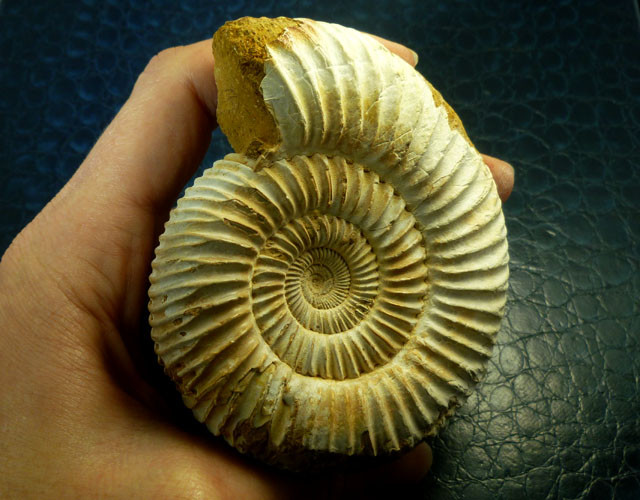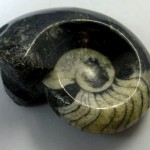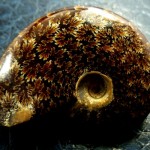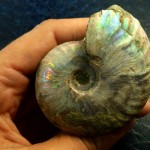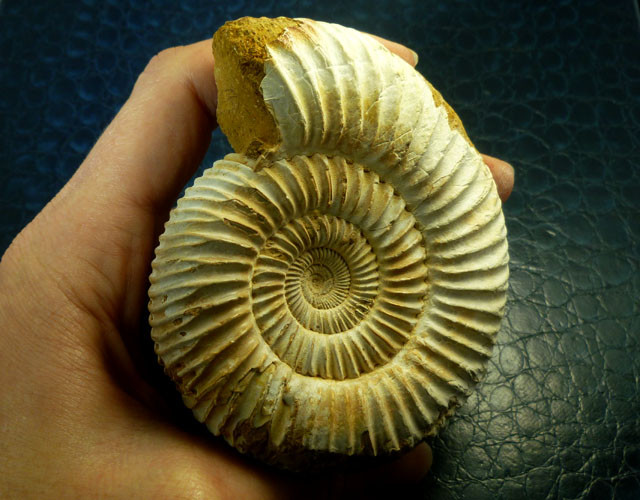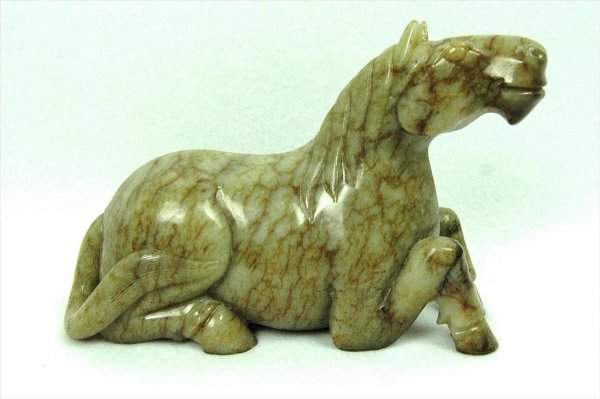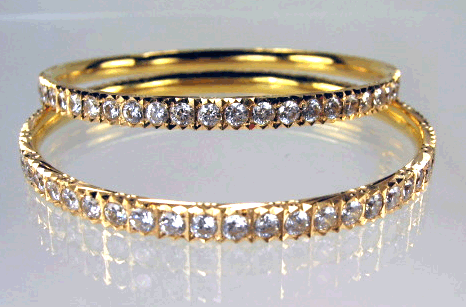The Ammonites name comes from the shell’s resemblance to a coiled rams horn (the ram being the symbol of the Egyptian god Ammon). Like the extinct belemmites and the living nautiloids, octopuses, squid and cuttlefish, they belonged to the mollusc group known as the cephalopods. This name comes from the Greek Kephale (head and podia (foot) referring to the tentacles they have in the head region.
Cephalopods as well as being ecologically important today, also have a fossil record going back to the beginning of complex animal life during the Cambran.
Ammonites dominated most marine environments for a period of 300 million years, from the late Silurian to the end of the Cretaceous about 6.5 million years ago when they died out with many other groups in the mass extinction of the time.
Ammonites were at their most diverse during the Mesozoic, which corresponds roughly on land to the Age of Reptiles and especially dinosaurs. Ammonites have been extensively studies and are so well known that they are often used as symbols of the fossil record. They are particularly important as index fossils used to identify geologic periods of their widespread distribution and rapid evolution.
Ammonites are usually reconstructed with large eyes and long tentacles similar to a squid. Some are assumed to have been speedy, predatory swimmers. The thousands of types are distinguished by features such as the coiling of the shell – from evolute to involute – as well as the shells’ width in its coils and umbilicus (the central first formed regions) zigzag lines, surface ribs and other ornamentations.
AMMONITES: Phylloceras

Phylloceras is one of the earlier ammonites and is moderately commonly found in the Northern Hemisphere deposits dating from the Early Jurassic Period, some185-180 million years ago.
Phylloceras is throught to be ancestral to the psiloceratid ammonites typified by Psiloceras and thus to the later very succcesful and diverse jurassic ammonites, It is an involute form which means that the spiral is tightly coiled and wraps over itself and of small to medium size. Because of its compressed, smooth profile and rounded venter (the external convex, or “belly: part, of tge shell), it is thought Phylloceras swam about with the aid of jet propulsion, in a manner perhaps similar to the living Nautilus.
Stephanoceras was an ammonite of the shallow seas
Of the Mid jurassic period, some over 160 million years ago. It had a dsic shaped regularly spiralled shell, with a strongly ribbed pattern. Deep ribs such as those shown by many ammonites may have contributed to the strength of the shell, thus providing them with protection against predators such as fish, marine reptiles and their larger cephalopod cousins. There are many species in the genus Stephanoceras and it is also widely distributed, with fossils having been found around the world. Specimens have discovered from Europe and North Africa to the Andes, and sometimes in great abundance.
GEMROCK AUCTIONS

